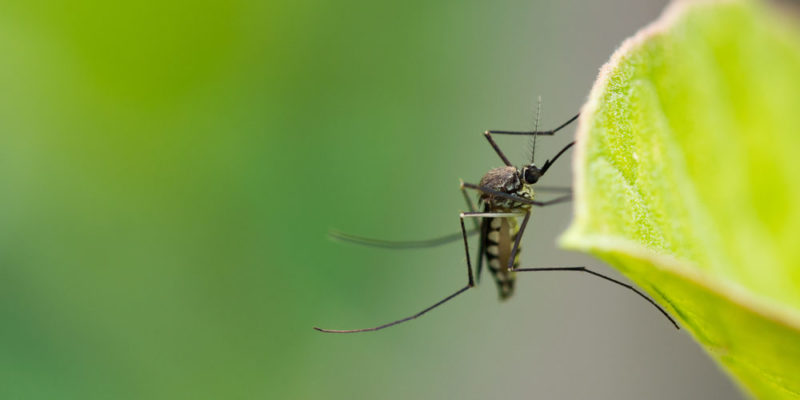We explain everything about mosquitoes, the types that exist and what their diet is like. Also, what are its characteristics and where it lives.
The mosquitos
The members of different families of diptera insects (with a single pair of membranous wings), with a thin body and long legs, are known as mosquitoes or mosquitoes . Its diet consists of the suction of internal juices of animals (females) and plants (males). Therefore, they transmit many diseases of humans and other species.
Mosquitoes are world famous. Virtually all languages have a term to name them. Their presence can constarse in ancient documents , such as Historia animalium of Aristotle , where he refers to them as " Empis ". It gives an account of its double cycle of life , aquatic and terrestrial, although it affirms that they originate spontaneously from putrefactive liquids .
Today they have been studied in depth and it is also understood that they play an important role in the transmission of many diseases. Therefore, there are campaigns aimed at reducing their numbers or eradicating them from cities and human populations , in order to reduce the rate of transmission of these diseases.
Mosquito anatomy
Mosquitoes are small insects . Its elongated and dark body measures around 15 mm .
It has three pairs of thin legs and one pair of wings , which when flying usually emit a characteristic sound (and very annoying when one is about to sleep).
They have an oral apparatus with a kind of trunk that is introduced into the body of mammals , birds and even reptiles , depending on the species. With it they can suck blood or other substances.
Types of mosquitoes

There are 39 genera and almost 3,500 known species of mosquitoes in the world. Of these, only the culicidae family is hematophagous (feeds on blood) and usually includes the genera:
- Anopheles . The most widely distributed of all the mosquito genera, with 465 species recognized worldwide, 50 of which are capable of transmitting 4 different parasites to humans .
- Culex . Another of the species with the greatest variety in the world, of which only in Panama, 88 different species are known. They are capable of transmitting different diseases of severity and tend to bite at night.
- Aedes . Common throughout the world, but especially in tropical and subtropical areas, they are responsible for numerous viral diseasesin humans and other animals. They are recognizable by the white bands on their legs and body, which give them the nickname “white legs”.
- Sabethes . Mainly arboreal in life, these mosquitoes do not usually live with humans except in rural areas, and they proliferate in South and Central America . They have shiny silver scales on their bodies.
- Ochlerotatus . Also considered a subgenus of the Aedes, they have the same white markings on their legs, and they can be found even in high places, where mosquitoes are rare.
Mosquito habitat
Mosquitoes are quite cosmopolitan insects: they are all over the world . In each place they have more or less adapted to their environment, but they notably prefer humid (with the literal presence of water ) and dark places.
They usually hibernate in times when the temperature drops a lot . They are known to prefer dark colors and are attracted to heat sources.
Mosquito feeding

Mosquitoes are not all blood-sucking. In fact, only the females of some species feed on blood . They generally feed on only one type of animal: birds, reptiles, mammals, etc. The males, on the other hand, usually feed on nectar or the vegetable juices of fruits and plants, through the same suction system.
There are, however, many species of mosquitoes that follow vegetarian diets , and even some that prey on the larvae of other species. Some of these species play a certain important role in flower pollination, for example.
Reproduction of mosquitoes

Mosquitoes have a reproductive cycle with complete metamorphosis , which means that they must change drastically throughout their pre- adult stages . Its life cycle is usually around 15 days, depending directly on the environmental heat.
Its reproduction cycle begins with the fertilization of the female, who to deposit her eggs and start the cycle requires having ingested blood first . It requires certain essential blood proteins for egg laying.
The eggs are deposited in stagnant water (up to 1 cm of water is enough), in which the eggs hatch and the larvae emerge, whose life is aquatic and feed on microorganisms . They resemble small worms that must rise to the surface of the water from time to time to breathe.
The larvae grow to change his skin about four times, until they are ready for metamorphosis. Then the larvae build a kind of cocoon called the pupa , in which they undergo the changes that will result in the adult ready to fly into adult life. During the pupal stage, mosquitoes do not feed and lead a quiet life.
Mosquito life span
Mosquitoes live for about 15 days , except for males that lead significantly shorter lives (one week). It is common for females to mate once in their life span, and different numbers of larvae emerge from each spawn.
Many of the larvae are preyed upon by fish, tadpoles, and other insect larvae . However, if they survive, a new adult will emerge from each, ready to repeat the cycle.
Mosquito repellants

Mosquitoes choose their "prey" by the smell of their skin and the heat they give off. Hot, sweaty skin is especially attractive to them, as they contain more lactic acid.
They also use the heat and carbon dioxide from our breath as a guide to find us even in the dark. This means that perfumes, light colors (less hot) and clean skin reduce the risk of being stung.
In addition there are specifically designed to repel substances such as sprays of metofluthrin or ointments rich in vitamin B1, a water soluble amino acid modifying properties sweating, making the skin less attractive to mosquitoes.
There are also sound repellants and platelets that act on a certain area , instead of on the body, but their effectiveness varies depending on the product and the conditions in which it is available. Generally, closed environments yield better results.
Diseases that transmit
Mosquitoes are important transmitters of diseases, among which are:
- Yellow fever. The vector of this viral disease is Aedes aegypti . It is known as black vomit, because in its most severe cases it can cause severe hemorrhagic and liver conditions, which are manifested in bloody vomiting. There is an effective vaccine against this disease, but not a cure, but a symptomatic treatment.
- Dengue. The well-known “bone breaker fever”, due to the chills and high fevers that it gives, as well as headaches and joint pain, is transmitted by Aedes aegypti . In its hemorrhagic version, it fills the skin with small red spots and can be fatal if left untreated.
- Zika fever. Caused by a virus transmitted by mosquitoes of the Aedes genus, it has symptoms similar to dengue, to which is added conjunctivitis, arthritis or temporary arthralgias, lasting about a week. However, its greatest risk is its link to microcephaly in fetuses, so pregnant women should avoid it at all costs.
- Malaria. Also known as malaria, it is produced by parasites of the genus plasmodium , which enter the body through the bite of mosquitoes of the genus Anopheles . It causes high fevers, headaches, chills, sweating, nausea, cough, and can also cause bloody stools, muscle aches, jaundice and, without treatment, coagulation defects, kidney and liver failure, and death.
Disease prevention

The fight against mosquito-borne diseases involves reducing exposure to the latter, through simple but effective actions, such as:
- Fumigation campaigns. Especially in times of rain and in swampy or humid areas.
- Repellent application. In the houses and in the body especially of the weakest ( children , the elderly, pregnant women).
- Elimination of stagnant waters. Whether in containers with plants, old tires, etc. to decrease the mosquito reproductive rate.
- Vaccination days. To the population and visitors, when possible.
Differences between mosquito and mosquito
There is no difference between these two terms, which are exactly synonymous . The universal preference is for mosquito, perhaps the more generic of the two terms.
However, in certain countries of Hispanic America such as Venezuela , Colombia, Peru , Honduras and Chile , the use of "zancudo" is preferred. Its etymology comes from the Latin zanga , "leg" , with a similar origin to that of the word strides .
The above content published at Collaborative Research Group is for informational and educational purposes only and has been developed by referring reliable sources and recommendations from technology experts. We do not have any contact with official entities nor do we intend to replace the information that they emit.
Veronica is a culture reporter at Collaborative Research Group, where she writes about food, fitness, weird stuff on the internet, and, well, just about anything else. She has also covered technology news and has a penchant for smartphone stories. .
Leave a reply
Your email address will not be published. Required fields are marked *Recent post

Sport: What Is It, Types, Risks, Features, Characteristics and Examples

Dogs: Emergence, Features, Characteristics, Feeding and Breeds

Story: Definition, Elements, Structure, Features and Characteristics

